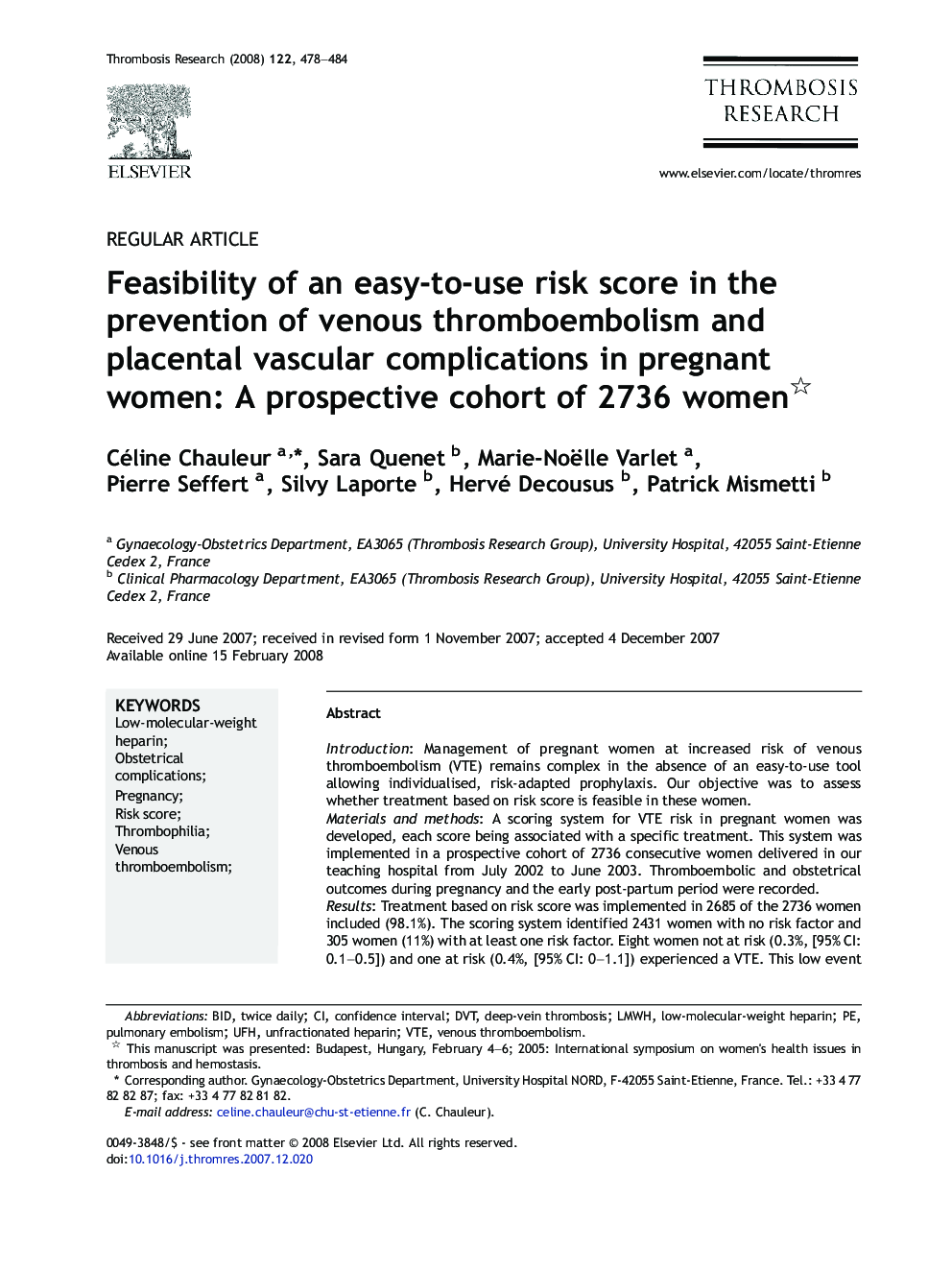| Article ID | Journal | Published Year | Pages | File Type |
|---|---|---|---|---|
| 3029472 | Thrombosis Research | 2008 | 7 Pages |
IntroductionManagement of pregnant women at increased risk of venous thromboembolism (VTE) remains complex in the absence of an easy-to-use tool allowing individualised, risk-adapted prophylaxis. Our objective was to assess whether treatment based on risk score is feasible in these women.Materials and methodsA scoring system for VTE risk in pregnant women was developed, each score being associated with a specific treatment. This system was implemented in a prospective cohort of 2736 consecutive women delivered in our teaching hospital from July 2002 to June 2003. Thromboembolic and obstetrical outcomes during pregnancy and the early post-partum period were recorded.ResultsTreatment based on risk score was implemented in 2685 of the 2736 women included (98.1%). The scoring system identified 2431 women with no risk factor and 305 women (11%) with at least one risk factor. Eight women not at risk (0.3%, [95% CI: 0.1–0.5]) and one at risk (0.4%, [95% CI: 0–1.1]) experienced a VTE. This low event rate precluded estimation of the discriminatory power of the score. However, the benefit of the scoring system was evaluated indirectly by assessing VTE incidence in the 46 women at risk in whom it was not used (15.2%, [95% CI: 4.8–25.6]).ConclusionsOur simple scoring system offers an easily implemented procedure for risk-based VTE prophylaxis of pregnant women and the proposed therapeutic strategy appears to be effective and safe in reducing VTE. The discriminatory power of the score is currently being evaluated in a randomized, controlled trial.
